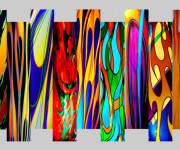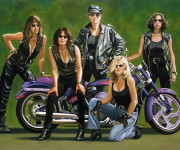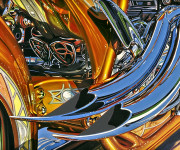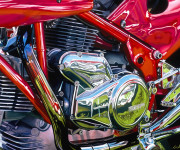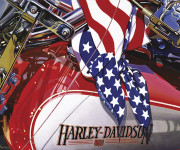Motorcycles
The history of Motorcycles begins in the second half of the 19th century in Europe. The first motorcycles were steam powered but it wasn’t until 1884 that the first commercial design for a self-propelled bicycle (a three-wheel design called the Butler Petrol Cycle), was conceived of and built in England.
In the decade from the late 1880’s, dozens of designs and machines emerged, particularly in Germany and England, and soon spread to America. The first instance of the term “motor cycle” appeared in 1894 in Germany and England.
At the turn of the century the first major mass-production firms were set up – Royal Enfield (1901) and Triumph and Norton (both in 1902) in England – Indian Motorcycle (1901) and Harley-Davidson (1903) in America.
By 1920, Harley-Davidson was the largest manufacturer, with their motorcycles being sold by dealers in 67 countries. By the late 1920’s or early 1930’s, DKW in Germany took over as the largest manufacturer and BMW motorcycles came on the scene in 1923.
Motorcycles only entered the cultural scene significantly after the Second World War. Some American veterans found a replacement for the camaraderie, excitement, danger and speed of life at war in motorcycles. Grouped into loosely organized clubs, motorcycle riders in the US created a new social institution—the “biker”—which was later skewed by the “outlaw” persona Marlon Brando portrayed in the 1954 film “The Wild One”.
In Europe, post-war motorcycle producers were more concerned with designing practical, economical transportation than social aspects, or the “Biker” image. Imports from the UK, Italy and Germany, thus found a niche in US markets that American bikes did not fill.
1946-1959 saw the Bobber Era – a motorcycle that had been “bobbed,” or relieved of excess weight by removing parts, particularly the fenders, with the intent of making it lighter and thus faster, or at least making it look better in the eyes of a rider seeking a more minimalist ride.
By the early 1960’s there was a big enough contingent of people modifying motorcycles, still mostly big Harley Davidsons, that a certain style had begun to take hold, now known as a “Chopper”.
The role of the motorcycle shifted in the 1960’s, from the tool of a life to a toy of a lifestyle – the Biker Babes and Dudes. It became part of an image of status, a cultural icon for individualism, a prop in Hollywood B-movies. The motorcycle became a recreational machine for sport and leisure, a vehicle for carefree youth, and not just an essential transportation for the mature family man or woman.
British manufacturers retained a dominant position in some markets until the rise of the Japanese manufacturers in the late 1960’s and early 1970’s. Today the Japanese manufacturers, Honda, Kawasaki, Suzuki, and Yamaha dominate the large motorcycle industry, although Harley-Davidson still maintains a high degree of popularity, particularly in the United States.
Recent years have seen a resurgence in the popularity around the world of many other motorcycle brands, including BMW, Triumph, Gilera and Ducati, and the emergence of Victory as a second successful mass-builder of big-twin American cruisers.

